The fishing last month was good, and it continued into this month.
Even though we had a few days of rain and a couple were windy, overall the weather wasn’t too bad, which meant we’ve been out and plenty of nice fish were caught.
Now, I may have done an article on this topic already, though I’m not too sure as, after having written a few over the years, the old brain sometimes forgets.
So here we go…
Many people make fishing sound complicated or perhaps more convoluted than it needs to be.
It doesn’t matter whether you’re fishing with lures or with bait.
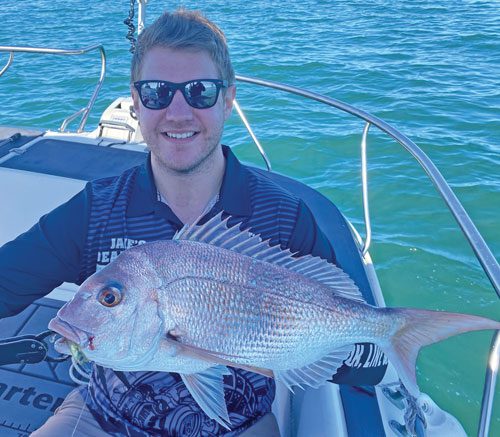
Yes, there are heaps of different techniques and yes, when you’ve done it for a long time, you can get quite methodical with it.
A few people who see pictures of great fish in fishing magazines will buy their boat, get out on the water and then nothing happens for them.
Remember, you have to walk before you can run and the best way to build confidence is simply to fish very basically – whether it’s basic with plastics and lures or basic with bait.
One of the most important things to be mindful of prior to putting your lure or bait in the water is that you’re in an area where there are fish, or the potential for fish.
This is super important, whether you’re chasing from basic bream up to Moreton Bay pelagics.
Where to start?
I frequently see, particularly in the bay, everyone on a jetty, pontoon or bank trying to cast as far out as they can into the middle.
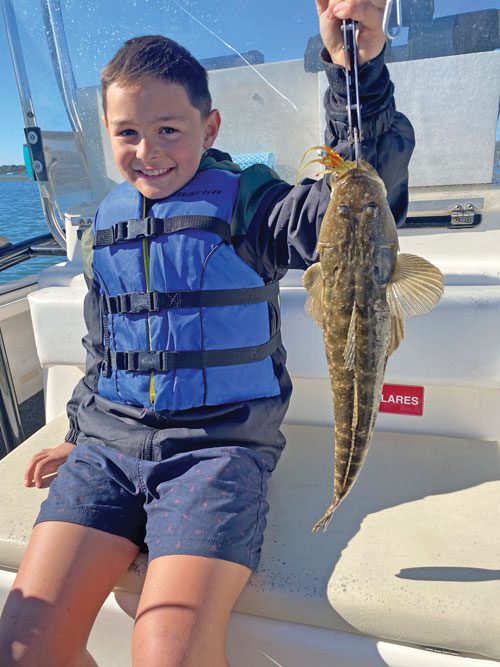
And those in boats are casting back towards the edge and into the shallows where the structure might be.
It gets to the point where the fisho on the jetty is casting out to the middle and the angler on the boat is casting underneath the jetty.
If you’re casting out to the middle, you should be casting to something – whether it’s a bit of structure or the hard bottom.
When casting out to the middle, you may just be casting into mud.
The fish are in close and, if you’re on a pontoon or jetty, they’re probably underneath you.
These are the things you may need to look at before deploying your bait or your lure.
In Moreton Bay, you can easily catch bream or flathead under a jetty or pontoon, or from the flat hard ground.
And from around the mussels, razor shells and rock carrying little crabs that we see around the edge of the bay when the tide goes out, you can catch yourself a lovely squire post August 15, grass sweetlip or tuskfish.
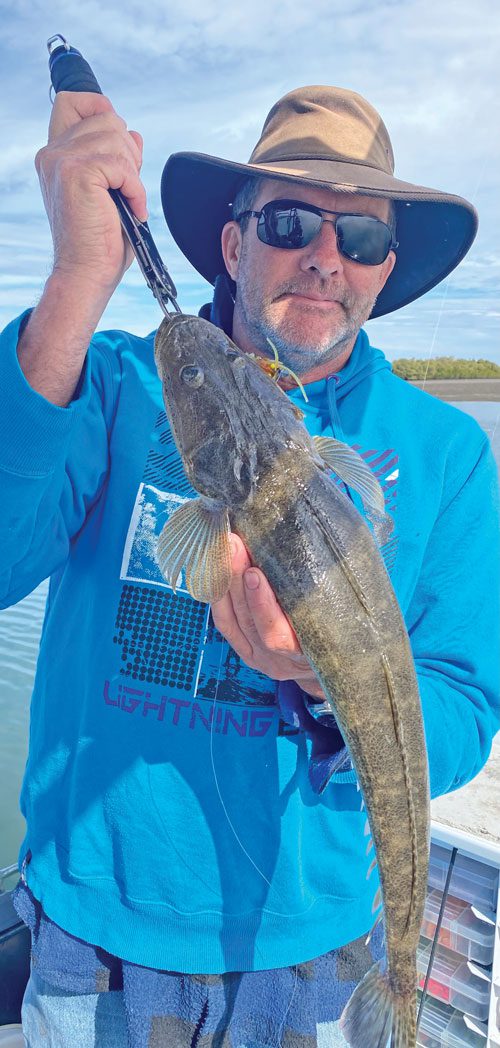
Because of the way the bay was formed, the fish will feed on everything in this sort of shallow reef system.
It’s very flat and doesn’t have many big pinnacles on it.
So, if you’re sitting on the bank and the tide goes out, in front of you will be covered in mussels and razor shells, and when the tide comes back in, it has the potential to hold bream, squire, grasss sweetlip and tuskfish.
These fish particularly as their teeth are designed to crush mussels, razor shells and the crabs and things that live on that type of ground – they’re not designed to chase bait schools, cut fish in half and pick the pieces up later, as our pelagic species do.
Though to be fair, in the right conditions and if there’s plenty of bait around, those fish may also chase bait schools but are designed to eat from the bottom.
So, if you’re a land-based angler, when you see a flat hard bottom at low tide, maybe come back and finish those areas on high tide.
Fishing it could be as simple as coming down with a berley pot and spreading some out over those areas to draw fish into where you’re going to place your bait.
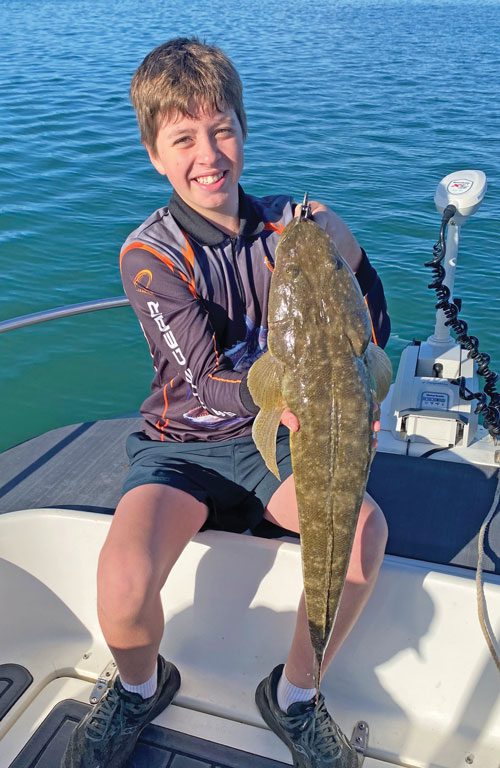
Remember, a berley pot can be basic – a plastic milk container with a couple of rocks in the bottom and a few holes punched in it, full of dry dog or cat food or some bread with a little tuna oil will work well.
Put it in the water and shake it up to let the berley disperse into the area you’re fishing.
Then, if it’s shallow and snaggy, use a float to suspend your bait slightly off the bottom.
The float can be as simple as a piece of foam or buy a little bobber for a couple of dollars from a tackle shop.
Suspend 1m of line below it with a nicely presented piece of squid, pillie or even a bit of chicken breast soaked in garlic – one of my favourites.
The setup can be a basic 7-8’ glass fishing rod with a 2000-3000 spin reel, 10-15lb mono line and a simple whiting long shank hook on the end.
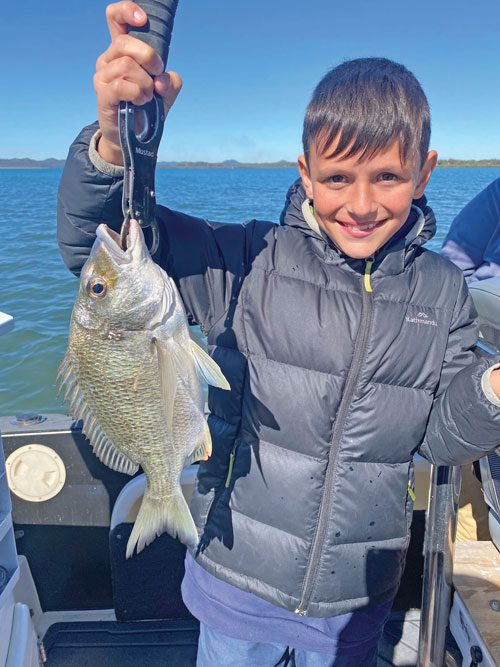
I suggest a running sinker from below the float right to the hook – you’ll be surprised how many fish you’ll catch with this simple technique.
No special fishing rods required – a cheap combination will do the job.
Many people make the mistake of casting to fishing areas such as this with no float.
Don’t get snagged every 10 minutes, give a float a go.
Very simple fishing is not going to cost of the world and believe me, you’ll be surprised at the quality fish you’ll catch.
Fish love structure.
Little fish hide behind it or in and around it, and bigger fish will then be in the same area because they eat the smaller fish.
One thing we have in this bay that many people avoid are mangroves – these are great structure for small fish to hide in, and bigger fish will hang around them to eat the smaller fish.
 Bush ‘n Beach Fishing Magazine Location reports & tips for fishing, boating, camping, kayaking, 4WDing in Queensland and Northern NSW
Bush ‘n Beach Fishing Magazine Location reports & tips for fishing, boating, camping, kayaking, 4WDing in Queensland and Northern NSW

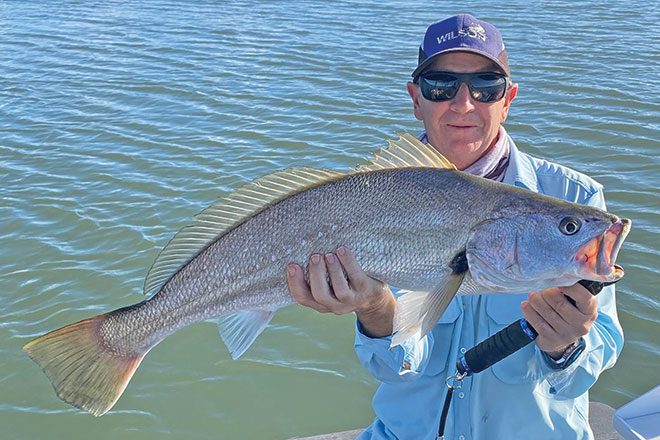








thanks for sharing its very informative